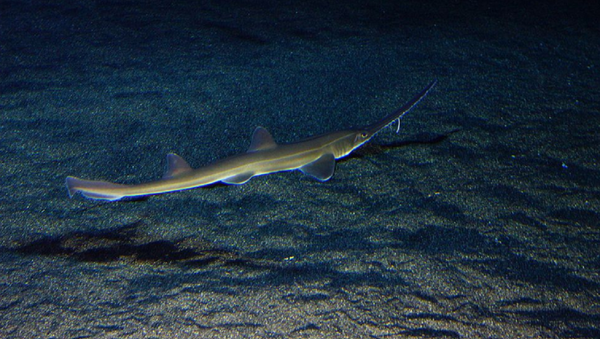The sharks, which have been given the scientific names Pliotrema kajae and Pliotrema annae - and nicknamed Kaja’s and Anna’s six-gill sawshark, respectively - were discovered off the coasts of Madagascar and Zanzibar, respectively, according to a report published by the team Wednesday in the journal PLOS ONE.
The new species are six-gill sawsharks, which have characteristically long snouts with teeth and feelers that allow them to detect prey.
— WWF Sharks (@WWF_Sharks) March 19, 2020
“The six-gill sawsharks are really quite extraordinary as most sawsharks have five gill slits per side,” lead author Dr. Simon Weigmann, who is based at the Elasmobranch Research Laboratory in Hamburg, Germany, is quoted as saying by Courthouse News Service.
“So it was really exciting to find a new six-gill sawshark species, and to find two new species – well that was simply astonishing!” Weigmann added.
— The Shark Trust (@SharkTrustUK) March 19, 2020
According to Weigmann, sawsharks in the West Indian Ocean are not very well understood, although the waters are an important area for shark and ray conservation.
“Knowledge of sawsharks in the western Indian Ocean is generally still scarce. But considering their known depth distributions, both new species are likely affected by fishing operations. This assumption, combined with the limited range and apparent rarity of both new species, raises concerns that they are vulnerable to overfishing and might be in continuing decline,” Weigmann explained.
— Sawfish Detective (@Africas_Sawfish) March 19, 2020
“This could be particularly alarming for Anna’s six-gill sawshark due to its very small known range, rarity and occurrence in shallow waters as the species is only known from depths of 20 to 35 meters (65 to 115 feet).”
However, the number of sawsharks has declined over the last few decades. They face an increased risk from commercial fishing and only produce between five and 10 offspring per year.
“Last year our team highlighted the massive underreporting of sharks and rays caught in the South West Indian Ocean and the urgent need to expand efforts globally to assess the impact of these fisheries on vulnerable species,” Andrew Temple of Newcastle University, an author of the study, said. “The discovery reinforces both how important the western Indian Ocean is in terms of shark and ray biodiversity, but also how much we still don’t know.”

